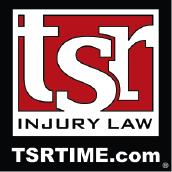What Minneapolis Truck Crash Victims Need To Know About a Spoliation Letter

Trucking companies and their insurers move quickly after a commercial truck crash. Within a few hours of a collision, they begin taking steps to try to limit their liability.
You need to move just as quickly to protect your interests as the victim of negligence. Deciding what to do, however, is quite a challenge when you are at the hospital recovering from your injuries.
At a time like this, calling an experienced lawyer is a critical step. A lawyer can begin working to gather evidence to build a case right away while you are focusing on your recovery. One step to preserve evidence after a truck crash may involve sending a spoliation letter to preserve evidence held by the trucking company.
Below, TSR Injury Law’s Minneapolis truck accident lawyers explain the importance of spoliation letters and the types of evidence they can preserve.
No upfront fees. Call to schedule a free legal consultation: (612) TSR-TIME.
What Is a Spoliation Letter?
A spoliation letter is a legal document written by a lawyer that gets sent to the trucking company and the trucking company’s insurer. This letter provides formal notification to these parties of the crash victim’s legal claim. Most importantly, the letter lists the types of evidence that cannot be destroyed, lost or altered.
Without a spoliation letter, the trucking company and its insurance carrier could take the opportunity to destroy evidence after a certain amount of time passes. The loss of this evidence would make it much harder to prove liability for the collision.
Your lawyer may also send spoliation letters to other related parties involved in the crash, such as the maintenance company that worked on the truck, brokers, or management companies.
Sending a spoliation letter is a key step in protecting the integrity of a claim’s evidence. It helps to provide all parties involved a fair chance to present their case.
What Evidence Can Be Preserved With a Spoliation Letter?
There are various pieces of evidence that can be used to establish fault in a truck crash. A well-crafted spoliation letter should say that all relevant evidence must be preserved. It should also list the specific types of evidence that cannot be destroyed or tampered with, such as:
- Data from the truck’s electronic logging device (ELD), such as the number of hours the driver spent on the road
- Truck maintenance records, which may reveal a history of mechanical issues or neglect of other issues that contributed to the crash
- Dashcam footage from the truck
- The truck’s GPS data, which can include details like speed and the route the driver was taking
- Employment and training records for the driver
- Cargo records, which might show cargo was not loaded properly
- Witness statements collected by the insurance company after the crash
- Pictures from the crash scene
- The commercial truck involved in the crash, as an examination of the truck could provide clues about why the crash happened
- The incident report completed by the truck driver
- Alcohol and drug testing records for the driver
- Dispatch records
- Permit and license information for the driver
- Emails
- Voicemail messages
- Text messages
- And more
Why Is a Spoliation Letter Important to a Truck Crash Case?
Despite the truck driver or trucking company’s negligent actions, truck crash victims have the burden of proof. They must present evidence of negligence and show that the crash would not have occurred if it wasn’t for another party’s negligence.
Once your lawyer sends the letter and it is delivered, the party that receives it can face severe consequences for destroying or altering evidence. Your lawyer can present a spoliation letter to prove the evidence should have been left alone.
Often, the trucking company and its insurer possess the evidence victims need to prove their cases. If evidence possessed by the trucking company gets destroyed, it will be incredibly difficult to prove what happened.
As the legal process goes on, the insurance company may be more likely to settle because they know your lawyer will have a compelling case.
However, it is vital that you contact a lawyer quickly so they can help you build a case immediately after the crash. Calling a lawyer right away allows him or her to immediately preserve evidence, helping to ensure the accuracy and reliability of the evidence.
No matter how severely you were injured in the crash, or how strong the evidence is, the trucking company will try to deny fault. You need an experienced legal professional advocating for your best interests and to hold the trucking and insurance company accountable.
At TSR Injury Law, we are always prepared to take matters to court if the insurance company does not offer the compensation victims need. We have a proven track record of success in the courtroom and have helped thousands of crash victims secure justice.
Injured in a Minnesota Truck Crash? Contact TSR Injury Law
At TSR Injury Law, we understand the devastating impact a truck crash can have on your life. We also know how important it is for victims to have a prompt legal response.
If you were injured in a commercial trucking crash that you think could have been avoided, call our firm right away to find out if we can assist you. The faster you contact a lawyer, the faster he or she can work to preserve evidence and build a robust case.
Trucking companies fight hard to avoid accountability for the injuries and damages they cause. You need a trusted advocate fighting just as hard for your interests.
Zero upfront costs. Free initial legal consultation. More than $1 billion recovered. (612) TSR-TIME



 Your ribs are not built to withstand blunt force trauma during a car crash. Even at a relatively slow speed, such a blow could bruise or even break your ribs. This is not an injury to take lightly, as there is a risk of severe complications that may threaten your life.
Your ribs are not built to withstand blunt force trauma during a car crash. Even at a relatively slow speed, such a blow could bruise or even break your ribs. This is not an injury to take lightly, as there is a risk of severe complications that may threaten your life. Many car crash injuries will heal in a matter of weeks or months, with few lingering symptoms. Unfortunately, some victims experience pain for months or years after their injury occurred. This is known as chronic pain, and it can dramatically impact your quality of life.
Many car crash injuries will heal in a matter of weeks or months, with few lingering symptoms. Unfortunately, some victims experience pain for months or years after their injury occurred. This is known as chronic pain, and it can dramatically impact your quality of life.